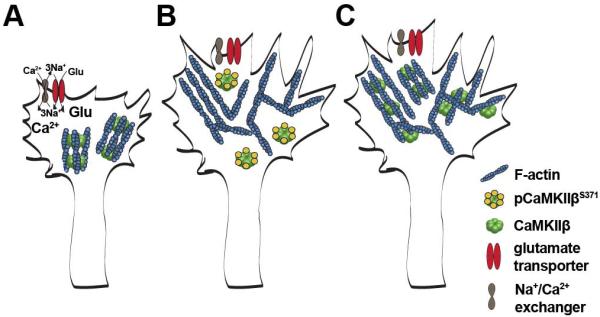FIGURE 7.
Proposed model for the role of a sodium-dependent glutamate transporter-CaMKIIβ-actin cytoskeleton axis in the regulation of oligodendrocyte maturation. A: L-glutamate (Glu) stimulates sodium-dependent glutamate transporter activity, which in turn leads to an increase in intracellular sodium (Na+) levels, activation of the reverse mode of the sodium/calcium exchanger and a transient increase in intracellular calcium (Ca2+) levels. B: The transient increase in intracellular calcium levels leads to phosphorylation events within CaMKIIβ’s actin binding/stabilizing domain (pCaMKIIβS371), detachment of CaMKIIβ from filamentous (F)-actin and the opening of a time window during which cytoskeletal rearrangements and morphological remodeling can occur. C: Upon de-activation (de-phosphorylation), CaMKIIβ binds to F-actin and thereby stabilizes the newly arranged cytoskeleton. Such cycles of activation and de-activation of CaMKIIβ’s actin binding activity allow re-organization of the actin cytoskeleton while at the same time preventing its uncontrolled disintegration. adapted from Okamoto et al. (2009).

